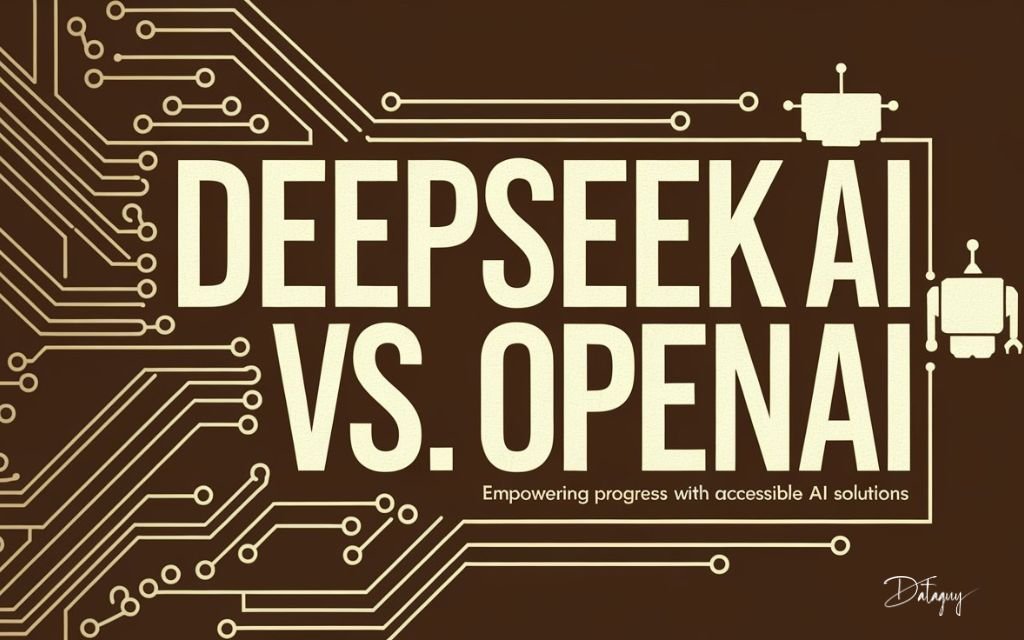Insights Index
ToggleDeepSeek R1: A Powerful, Free Open Source AI Model with Unmatched Reasoning
Overview of DeepSeek AI
Company Background
DeepSeek AI, based in Hangzhou, China, emerged in 2023 under the guidance of High-Flyer, a hedge fund that initially focused on machine learning for stock trading. Within a short span, the company has gained recognition for its innovative open-source AI models, designed to compete with global giants while reducing AI costs in China.
Key Developments
Recent Releases
- DeepSeek R1: Released on January 22, 2025, this model sets a new benchmark for reasoning, coding, and mathematics. Its accessibility as a free web application makes it a game-changer in the industry.
- DeepSeek V3: Launched in December 2024, this model boasts 671 billion parameters and employs advanced training techniques. Its efficiency and lower training costs have garnered widespread attention.
Technical Innovations
Chain-of-Thought Reasoning
DeepSeek’s Chain-of-Thought (CoT) reasoning enables models to deconstruct complex problems into logical steps, mimicking human thought processes. This innovation ensures contextually relevant and coherent outputs.
Mixture of Experts (MoE) Architecture
DeepSeek employs an MoE framework that activates only a fraction of its parameters (e.g., 37 billion of 671 billion), resulting in computational efficiency and scalability without compromising performance.
Competitive Landscape
Pricing War in China
DeepSeek has disrupted the market by offering its services at significantly lower costs than competitors like OpenAI. For instance, OpenAI charges $7.50 per million tokens, while DeepSeek offers the same at just $0.14.
Comparison with Other AI Models
Performance Comparison
- Mathematics: 79.8% on AIME 2024 and 93% on MATH-500.
- General Knowledge: 90.8% on MMLU.
- Coding: Ranked in the 96.3rd percentile on Codeforces.
Cost Efficiency
DeepSeek R1 is up to 95% more affordable than OpenAI models, making high-performance AI accessible to more users.
Architectural Innovations
The MoE and CoT reasoning frameworks allow DeepSeek’s models to efficiently tackle diverse and complex tasks.
Advantages of Chain-of-Thought Reasoning
- Enhanced Problem-Solving Capabilities: CoT reasoning allows the model to excel in tasks like math, coding, and logical deduction.
- Improved Transparency: Step-by-step reasoning improves explainability, essential for fields like healthcare and finance.
- Self-Verification and Reflection: The model refines outputs through self-assessment, ensuring accuracy in high-stakes scenarios.
- Scalability and Efficiency: Efficient parameter utilization boosts performance across varied applications.
- Adaptability to Diverse Applications: Ideal for education, research, and software development.
- Cost-Effectiveness: Advanced reasoning capabilities are delivered at a fraction of the cost of competitors.
Handling Complex Tasks
Mathematical Benchmarks
DeepSeek R1 scores 79.8% on AIME 2024 and 93% on MATH-500, demonstrating exceptional mathematical reasoning capabilities.
Coding Challenges
With a ranking in the 96.3rd percentile on Codeforces, DeepSeek R1 showcases superior coding skills, efficiently solving complex programming problems.
Multi-Stage Training Approach
DeepSeek’s training incorporates fine-tuning with long CoT examples, reinforcement learning for refined reasoning, and synthetic dataset generation for diverse problem-solving.
Scalability and Efficiency
DeepSeek’s architecture efficiently handles large-scale tasks while maintaining high performance.
Training Data Distribution
- Multi-Stage Training Process: A four-stage pipeline integrates supervised fine-tuning (SFT) and reinforcement learning (RL), ensuring stability and incremental improvements.
- Cold Start Data: Carefully curated datasets stabilize training, addressing readability and coherence.
- Diverse Prompt Distributions: Varied prompts ensure adaptability across tasks, enhancing generalization.
- Synthetic Dataset Generation: Approximately 600k reasoning samples and 200k writing samples enrich training diversity.
- Focus on Readability and Coherence: Training data is curated for clarity, ensuring user-friendly outputs.
- Iterative Learning with Human Feedback: Human annotators refine the dataset, ensuring quality and usability.
Cost Comparison
Pricing Structure
DeepSeek R1 costs $2.10 per million output tokens and $0.14 per million input tokens, compared to OpenAI’s $60.00 and $7.50, respectively.
Performance Parity
DeepSeek delivers performance on par with or better than OpenAI models, especially in math and coding tasks.
Open Source Advantage
Released under an MIT license, DeepSeek R1 allows modifications and free use, reducing costs further.
Operational Efficiency
Innovative training techniques like RL lower costs while improving performance.
Accessibility
Affordable pricing democratizes AI access, opening doors for developers and researchers.
Conclusion
DeepSeek AI has positioned itself as a game-changer in the AI industry. With cutting-edge technology, affordability, and open-source accessibility, it is not just a competitor to global giants like OpenAI but a leader in its own right.
Whether in coding, mathematical reasoning, or diverse applications, DeepSeek is paving the way for a future where high-quality AI is within everyone’s reach.

